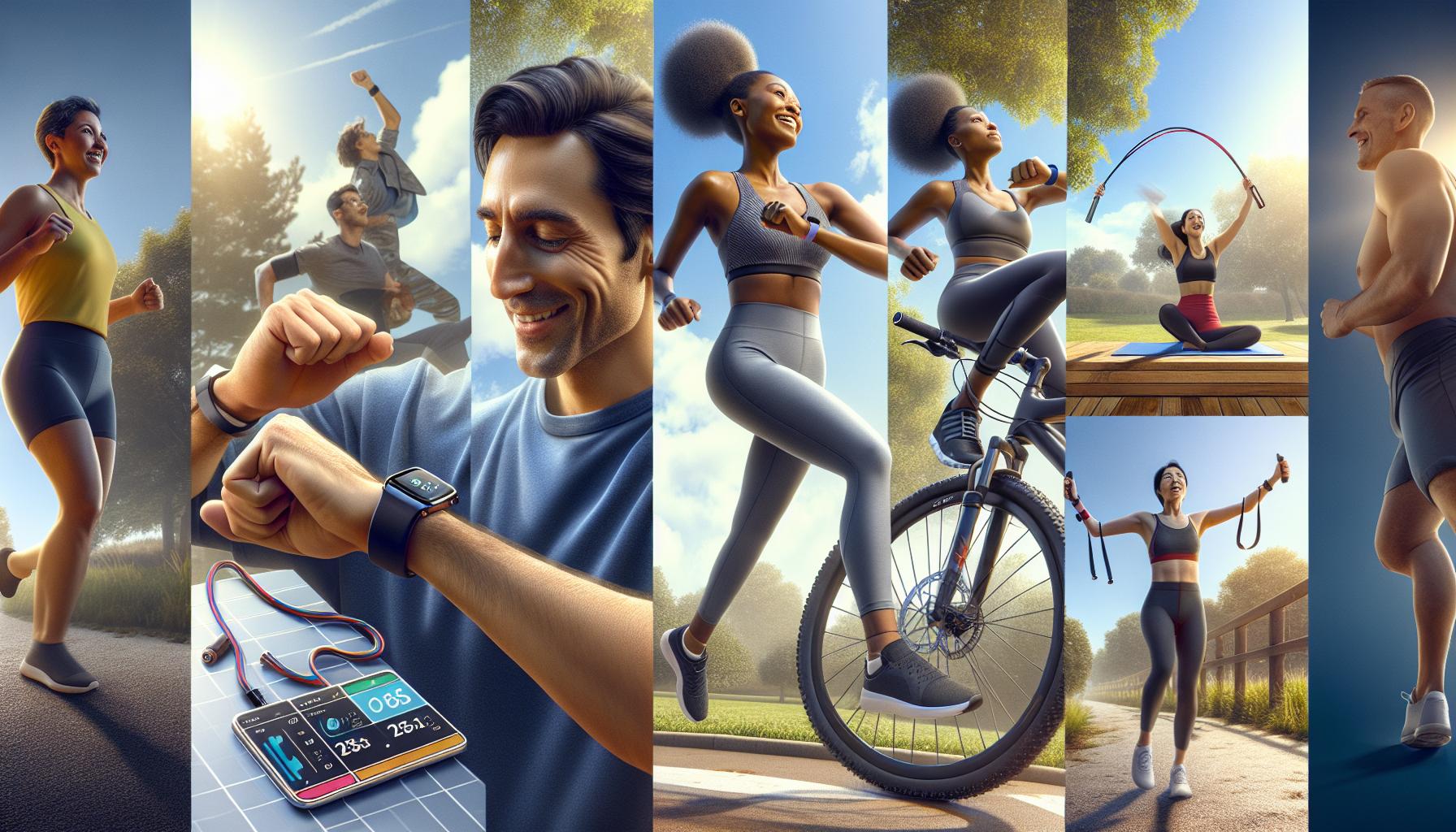In today’s fast-paced world, technology is woven into the fabric of our daily lives. From smartwatches tracking our steps to apps that monitor our diets, it’s hard to ignore the impact of tech on our physical health. While these advancements often promote healthier lifestyles, they also bring challenges that can affect our well-being.
I’ve noticed how technology can be a double-edged sword. On one hand, it offers tools that encourage fitness and wellness. On the other, it can lead to a sedentary lifestyle and increased screen time, creating a paradox in our health journey. In this article, I’ll explore how technology influences our physical health, highlighting both the benefits and drawbacks we face in this digital age.
Key Takeaways
- Technology’s Dual Nature: Technology significantly influences physical health, offering both benefits like fitness tracking and drawbacks such as a sedentary lifestyle.
- Promoting Active Living: Wearable devices and health apps provide real-time data that encourage individuals to maintain active lifestyles and make informed health choices.
- Sedentary Risks: Prolonged screen time correlates with increased risks of obesity, cardiovascular diseases, and other health concerns, making it vital to find balance.
- Mental Health Considerations: Excessive technology use can lead to mental health issues, including anxiety and disrupted sleep patterns, highlighting the need for healthy boundaries.
- Strategies for Balance: Implementing time limits, regular breaks, and tech-free zones can help mitigate the negative effects of technology on physical health.
- Role of Healthcare Professionals: Healthcare providers can offer guidance on integrating technology into lifestyles, ensuring individuals can benefit from it while minimizing potential risks.
How Does Technology Affect Physical Health
Technology significantly impacts physical health, affecting both lifestyle choices and health outcomes. Innovations like smartwatches, fitness trackers, and health apps encourage active living. These tools promote regular exercise by providing real-time data on activity levels, heart rates, and sleep patterns. For example, devices can alert users about reaching step goals, fostering motivation to stay active.
Conversely, technology also contributes to health concerns. Increased screen time from computers, tablets, and smartphones can lead to a sedentary lifestyle. Prolonged sitting correlates with various health issues, such as obesity, cardiovascular diseases, and musculoskeletal disorders. Studies show that the average American adult spends over 10 hours daily engaged with screens, raising awareness about the need for balance.
Furthermore, technology influences mental health. While digital communication fosters connectivity, it can also lead to anxiety and stress. Social media platforms often create unrealistic comparisons, impacting self-esteem and overall well-being. Understanding these factors reveals technology’s dual nature, with benefits that can encourage healthier choices while also presenting significant challenges that require attention.
Positive Impacts of Technology on Physical Health

Technology significantly enhances physical health through improved access to information and the use of wearable health devices. These advancements empower individuals to make informed health choices.
Enhanced Access to Information
Access to accurate health information has transformed personal health management. Various online resources, including medical websites and health apps, enable people to research conditions, treatments, and wellness strategies. For example, a study by the Pew Research Center found that 77% of Internet users look for health-related information online. This availability of information fosters proactive health behaviors, as individuals can easily learn about nutrition, exercise regimens, and preventive care measures.
Wearable Health Devices
Wearable health devices, such as smartwatches and fitness trackers, provide real-time data that encourages healthier lifestyles. These devices monitor key health metrics like heart rate, steps taken, and sleep quality. According to a report by Statista, the global market for wearable health technology reached $32 billion in 2020 and is projected to grow further. By integrating daily activity tracking and personalized feedback, these devices motivate users to achieve fitness goals and maintain an active lifestyle.
Negative Impacts of Technology on Physical Health

Technology’s rapid evolution results in significant negative impacts on physical health. Understanding these effects helps me navigate modern lifestyles while prioritizing well-being.
Sedentary Lifestyle
Sedentary lifestyles thrive in the era of technology. Many individuals spend extended periods sitting while using devices like computers and smartphones. Data indicates that the average American adult engages with screens for over 10 hours daily. This behavior correlates with an increase in obesity rates, cardiovascular diseases, and related health issues. Research reveals that prolonged sitting can lead to increased risk of diabetes and premature mortality. Encouraging regular movement through breaks or integrating physical activities into daily routines counteracts these effects.
Mental Health Issues
Mental health issues often arise from technology’s influence. While digital communication connects me with others, it can also contribute to anxiety and stress. Social media exposure results in constant comparisons, fostering self-esteem challenges. Studies show that excessive screen time can disrupt sleep patterns, leading to further mental health complications. Online bullying and negative interactions can exacerbate feelings of isolation. Implementing digital detoxes or setting boundaries with technology use promotes better mental well-being.
Balancing Technology Use and Physical Health

Finding a balance between technology use and physical health is essential for overall well-being. Implementing specific strategies can enhance the benefits of technology while minimizing its drawbacks.
Strategies for Healthy Technology Use
- Set Time Limits: I often set daily limits on screen time to reduce prolonged exposure. These limits help prevent physical strain and promote movement.
- Incorporate Regular Breaks: I take frequent breaks every hour of screen use. This practice helps alleviate eye strain and encourages physical activity.
- Choose Active Technology: I opt for fitness trackers and active apps that encourage movement. These tools promote healthier habits through challenges and reminders.
- Create Tech-Free Zones: I establish areas in my home where technology isn’t allowed, such as bedrooms and dining areas. This practice fosters better sleep and quality family time.
- Engage in Physical Activities: I prioritize activities like walking, cycling, or exercising without distractions from screens. Integrating physical activity into my routine balances technology use.
Role of Healthcare Professionals
Healthcare professionals play a critical role in guiding technology use for better health. They provide advice on how to integrate technology into daily lifestyles effectively. They also educate patients on the importance of monitoring screen time and its impact on physical health. Regular consultations with healthcare providers can identify technology’s benefits and pitfalls, leading to personalized recommendations. By leveraging their expertise, I can navigate the intersection of technology and health more effectively.
Navigating the intersection of technology and physical health requires a mindful approach. While I appreciate the benefits of health-monitoring devices and the wealth of information available online, I recognize the potential pitfalls of excessive screen time and sedentary behavior. It’s crucial to find balance in our tech usage to harness its advantages without compromising our well-being.
Incorporating regular physical activity and setting boundaries around technology can significantly enhance our health. I believe that by being proactive and intentional with how we use technology, we can create a healthier lifestyle that leverages the best of both worlds. Embracing this balanced approach can lead to improved physical and mental health outcomes in our increasingly digital lives.
